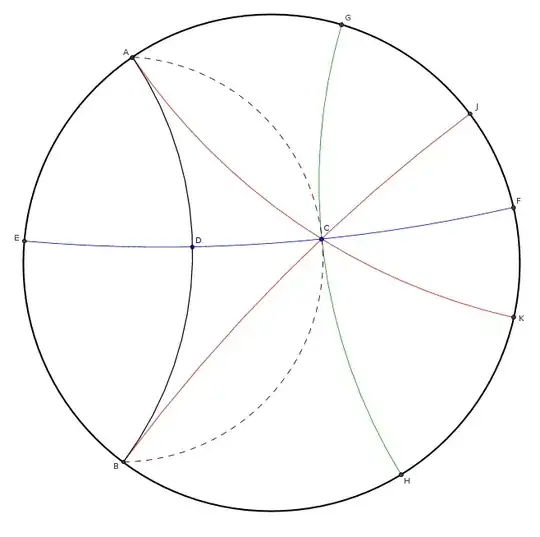Lines are parallel iff they are distinct, non-intersecting, and not diverging. If you can travel along one of them arbitrarily far, and after some finite distance, any further travel will only make them get further apart, then they are diverging, and if not, they are parallel.
Lines that don't intersect are "non-secant". All parallel lines are also non-secant, and in 2D Euclidean geometry, all non-secants are parallel, but in 3D or Hyberbolic 2D, non-secant lines can be non-parallel.
A curve distinct from yet equidistant from a line (or something else like a point) is an Equidistant Curve. In non-euclidean geometry, equidistant curves to lines are never lines themselves. In 3D euclidean geometry, they may be, but might not be lines. Only in 2D euclidean geometry are equidistant curves to lines necessarily lines themselves.
Now for the really strange bit. Remember how parallel is defined in terms of moving along a line. That means being parallel has a direction. In Euclidean geometry, parallel lines are always parallel in both directions, but hyperbolic lines are only parallel in one direction, and they diverge in the other direction. So given a line, and a point not on that line, there are two parallel lines, one in each direction.
The following diagram shows a Poincare Disc model of the Hyperbolic plane. The points around the edge are "ideal points" while those within are real points. Hyperbolic lines map to circular arcs perpendicular to the edge of the disc.

It hows Line $\overline{AB}$ and real point $C$. Perpendicular to $\overline{AB}$ through $C$ is $\overline{EF}$, and perpendicular to that through $C$ is $\overline{HG}$ which is nonsecant to $\overline{AB}$, but not parallel to it, note how they diverge to infinity in both directions. $\overline{AB}$ and $\overline{AK}$ are parallel, but only in the direction of ideal point $A$, they diverge toward $B$. Similarly, $\overline{AB}$ and $\overline{BJ}$ are parallel toward $B$. The dashed arc $\overset{\displaystyle\frown} {BCA}$ is actually an equidistant curve, not a line, note how it meets the edge of the dist at a non-right angle.

